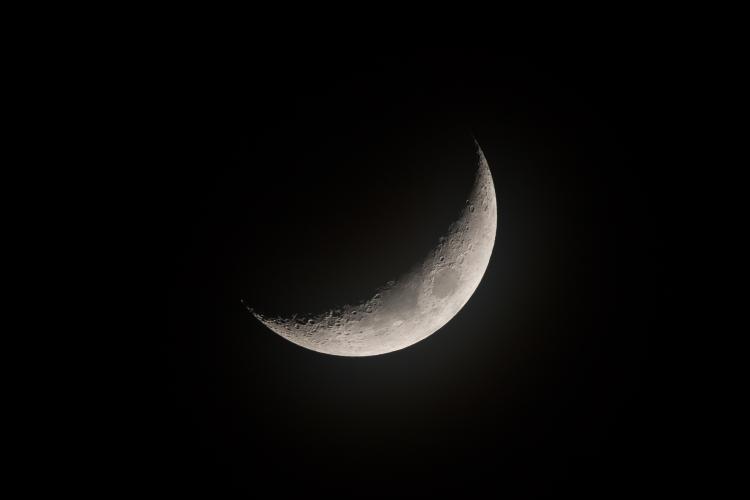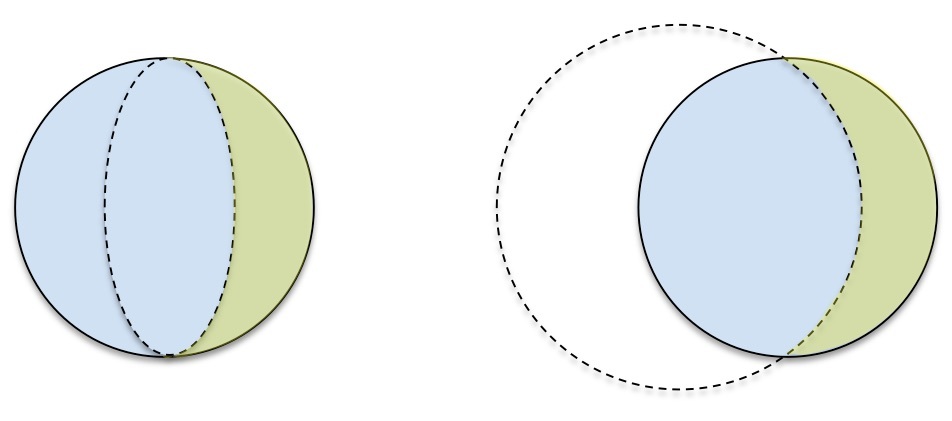Shape of the moon
 The moon can be modeled as a sphere of radius
, at a large distance
from us. The moon is illuminated by a parallel beam of sunlight, which is the part of its surface that we see. Depending on the angle between our line of sight and the incoming sunlight, the moon may appear as the typical "moon shape" as shown above.
The moon can be modeled as a sphere of radius
, at a large distance
from us. The moon is illuminated by a parallel beam of sunlight, which is the part of its surface that we see. Depending on the angle between our line of sight and the incoming sunlight, the moon may appear as the typical "moon shape" as shown above.
Which of these two methods correctly describes how we see the moon from the earth?
-
Pick two diametrically opposed points and , and then draw an ellipse with major axis and take one of the two parts of the circle cut out as in the diagram below left.
-
Pick two diametrically opposed points and , then draw a second, larger circle which intersects the original circle at points and , and then take one of the two parts of the circle cut out as in the diagram below right.

This section requires Javascript.
You are seeing this because something didn't load right. We suggest you, (a) try
refreshing the page, (b) enabling javascript if it is disabled on your browser and,
finally, (c)
loading the
non-javascript version of this page
. We're sorry about the hassle.
Method 1 is correct. The boundary between light and dark on the moon sphere is a circle C centered at the sphere's center. The projection of a circle onto a plane is an ellipse, whose midpoint is the projection of the center of the circle. (Here we assumed that no perspectival distortion takes place due to differences in distance to the observer; this is warranted by d > > R .)
To see that method 2 is different, look at the angles of intersection. In method 1, the circle and ellipse both have a horizontal tangent in the intersection points A and B ; thus they intersect at 0 ∘ . In method 2, the two circles intersect at a non-zero angle.